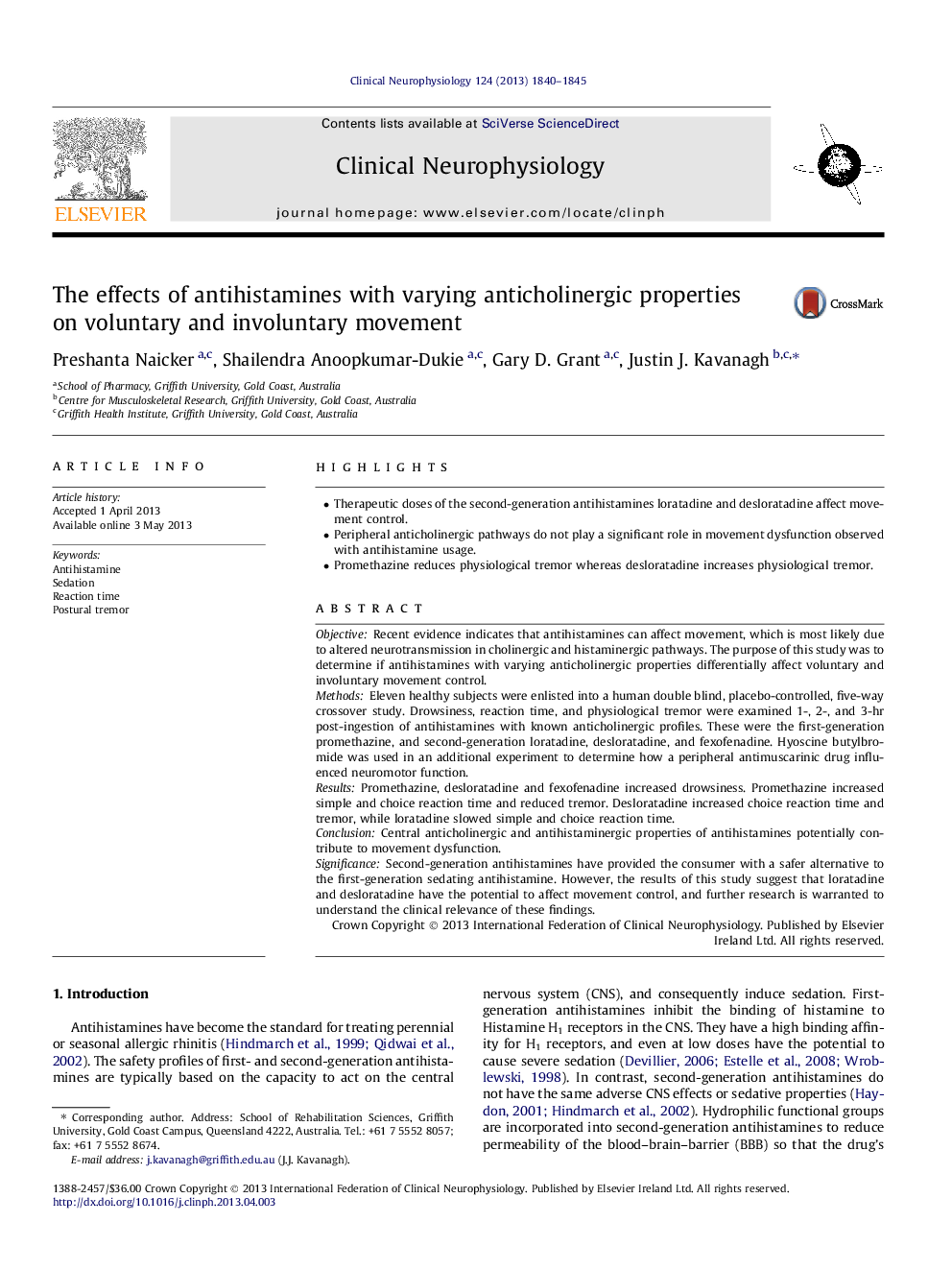| Article ID | Journal | Published Year | Pages | File Type |
|---|---|---|---|---|
| 6009003 | Clinical Neurophysiology | 2013 | 6 Pages |
â¢Therapeutic doses of the second-generation antihistamines loratadine and desloratadine affect movement control.â¢Peripheral anticholinergic pathways do not play a significant role in movement dysfunction observed with antihistamine usage.â¢Promethazine reduces physiological tremor whereas desloratadine increases physiological tremor.
ObjectiveRecent evidence indicates that antihistamines can affect movement, which is most likely due to altered neurotransmission in cholinergic and histaminergic pathways. The purpose of this study was to determine if antihistamines with varying anticholinergic properties differentially affect voluntary and involuntary movement control.MethodsEleven healthy subjects were enlisted into a human double blind, placebo-controlled, five-way crossover study. Drowsiness, reaction time, and physiological tremor were examined 1-, 2-, and 3-hr post-ingestion of antihistamines with known anticholinergic profiles. These were the first-generation promethazine, and second-generation loratadine, desloratadine, and fexofenadine. Hyoscine butylbromide was used in an additional experiment to determine how a peripheral antimuscarinic drug influenced neuromotor function.ResultsPromethazine, desloratadine and fexofenadine increased drowsiness. Promethazine increased simple and choice reaction time and reduced tremor. Desloratadine increased choice reaction time and tremor, while loratadine slowed simple and choice reaction time.ConclusionCentral anticholinergic and antihistaminergic properties of antihistamines potentially contribute to movement dysfunction.SignificanceSecond-generation antihistamines have provided the consumer with a safer alternative to the first-generation sedating antihistamine. However, the results of this study suggest that loratadine and desloratadine have the potential to affect movement control, and further research is warranted to understand the clinical relevance of these findings.
